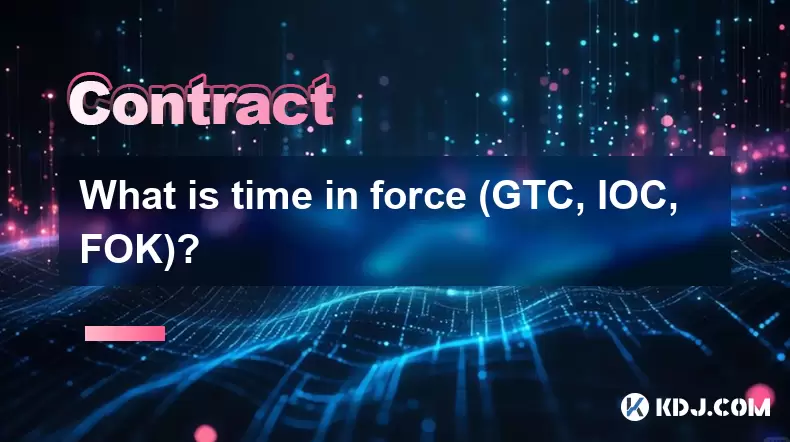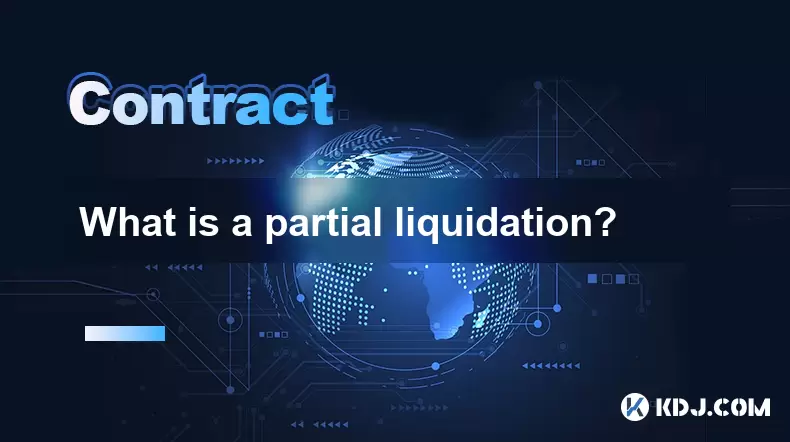-
 Bitcoin
Bitcoin $118000
0.81% -
 Ethereum
Ethereum $3579
2.21% -
 XRP
XRP $3.436
1.63% -
 Tether USDt
Tether USDt $1.000
-0.03% -
 BNB
BNB $734.9
1.87% -
 Solana
Solana $177.9
2.09% -
 USDC
USDC $0.9999
-0.01% -
 Dogecoin
Dogecoin $0.2422
5.82% -
 TRON
TRON $0.3205
-0.56% -
 Cardano
Cardano $0.8326
3.69% -
 Hyperliquid
Hyperliquid $44.98
3.47% -
 Stellar
Stellar $0.4642
1.89% -
 Sui
Sui $3.839
3.86% -
 Chainlink
Chainlink $18.47
6.00% -
 Hedera
Hedera $0.2693
3.71% -
 Avalanche
Avalanche $24.91
7.30% -
 Bitcoin Cash
Bitcoin Cash $517.3
1.93% -
 Shiba Inu
Shiba Inu $0.00001495
4.46% -
 Litecoin
Litecoin $112.5
11.69% -
 UNUS SED LEO
UNUS SED LEO $8.978
0.06% -
 Toncoin
Toncoin $3.222
1.84% -
 Polkadot
Polkadot $4.430
6.36% -
 Uniswap
Uniswap $10.13
1.08% -
 Monero
Monero $320.3
0.32% -
 Ethena USDe
Ethena USDe $1.001
-0.05% -
 Bitget Token
Bitget Token $4.894
2.32% -
 Pepe
Pepe $0.00001335
4.48% -
 Dai
Dai $0.9999
-0.01% -
 Aave
Aave $317.3
1.34% -
 Cronos
Cronos $0.1225
3.98%
Can a smart contract be deleted?
Smart contracts are immutable by design, but can be deleted using the selfdestruct() function if implemented, though historical data remains on the blockchain.
Jul 14, 2025 at 03:49 pm

Understanding Smart Contracts and Immutability
A smart contract is a self-executing contract with the terms of the agreement directly written into code. It operates on blockchain platforms like Ethereum, where once deployed, it becomes part of the immutable ledger. This immutability is one of the core features of blockchain technology, ensuring that data cannot be altered or deleted after being recorded. Therefore, from a technical standpoint, smart contracts are designed to be permanent and not deletable.
However, this raises an important question: if a smart contract cannot be modified or removed, what happens when errors or vulnerabilities are discovered after deployment?
Self-Destruct Function in Solidity
In the context of Ethereum and other EVM-compatible blockchains, developers can include a special function known as selfdestruct() (formerly called suicide()) in their Solidity code. This function allows a contract to terminate itself and send its remaining Ether balance to a designated address.
- The syntax for this function is
selfdestruct(payable(address)). - When executed, the contract's bytecode and storage are removed from the state.
- However, the transaction history associated with the contract remains on the blockchain.
This means that while the contract's current state can be wiped out, its historical data remains permanently recorded on the blockchain.
Prerequisites for Deleting a Smart Contract
To delete a smart contract using the selfdestruct function, several conditions must be met:
- The contract must have a self-destruct mechanism coded in advance.
- The function must be callable by an authorized address—often the contract owner.
- There should be no external dependencies or tokens locked within the contract that could be lost during deletion.
If a developer does not include the selfdestruct function in the original code, there is no way to remove the contract from the blockchain retroactively.
Alternative Approaches to Managing Obsolete Contracts
When a contract cannot be deleted due to missing a self-destruct function, developers often adopt alternative strategies:
- Deprecation: Developers can mark a contract as obsolete and redirect users to a new version.
- Pausing functionality: Using a pausable contract pattern, developers can disable certain functions without deleting the contract.
- Proxy contracts: These allow upgrades to contract logic while maintaining the same contract address.
These approaches do not delete the contract but help manage its lifecycle and reduce risks associated with outdated code.
Security Implications of Deletable Contracts
Allowing a contract to be deleted introduces potential security concerns:
- If the selfdestruct function is accessible to unauthorized parties, it could lead to loss of funds or data.
- Malicious actors might exploit poorly secured self-destruct mechanisms to drain contract balances.
- Even after deletion, the contract’s past interactions remain visible, which could pose privacy issues in some use cases.
Therefore, implementing such a feature requires careful access control and thorough auditing.
Real-World Examples and Considerations
There have been real-world scenarios where developers had to rely on self-destruct functions to decommission faulty contracts:
- In 2016, the infamous DAO hack highlighted how vulnerable contracts could be exploited. Although the contract wasn't deleted immediately, a hard fork was required to recover funds.
- Many decentralized finance (DeFi) projects now include emergency shutdown functions, allowing them to pause or delete contracts in case of critical bugs.
Despite these examples, the vast majority of deployed smart contracts remain active indefinitely because they lack built-in deletion capabilities.
Frequently Asked Questions
Q: Can I delete a smart contract if I didn’t include a selfdestruct function?
A: No, if the contract was not programmed with a selfdestruct function or similar mechanism, it cannot be deleted or modified after deployment.
Q: Does deleting a smart contract erase all traces of it from the blockchain?
A: No, only the current state of the contract is cleared. Its deployment transaction and any prior interactions remain permanently stored on the blockchain.
Q: Who can trigger the selfdestruct function in a smart contract?
A: Only addresses granted permission in the contract code can execute the selfdestruct function. Typically, this is limited to the contract owner or a privileged role.
Q: Is it safe to include a selfdestruct function in a smart contract?
A: Including this function can introduce risks if not properly secured. It should be used with caution, including multi-signature controls and timelocks to prevent unauthorized deletion.
Disclaimer:info@kdj.com
The information provided is not trading advice. kdj.com does not assume any responsibility for any investments made based on the information provided in this article. Cryptocurrencies are highly volatile and it is highly recommended that you invest with caution after thorough research!
If you believe that the content used on this website infringes your copyright, please contact us immediately (info@kdj.com) and we will delete it promptly.
- SUI Altcoin: Primed for Potential 100x Gains?
- 2025-07-20 04:50:12
- Panicked, Child, Swallowed Coin: A Parent's Worst Nightmare (and What to Do)
- 2025-07-20 04:35:12
- WLFI Token Tradability: World Liberty Finance's Bold Move Under Trump's Crypto Wing
- 2025-07-20 04:50:12
- Floki Price Rockets: Breakout Rally or Meme Coin Mirage?
- 2025-07-20 04:35:12
- Tinubu, the North, and Appointments: Too Little, Too Late?
- 2025-07-20 03:20:15
- Stellar Blade Hacked: When Crypto Scams Target Your Favorite Games
- 2025-07-20 03:50:12
Related knowledge

What is a maker vs a taker fee?
Jul 19,2025 at 01:14am
Understanding the Basics of Cryptocurrency Exchange FeesIn the world of cryptocurrency trading, maker vs taker fees are a fundamental concept that eve...

How to analyze Bitcoin futures data from CME?
Jul 19,2025 at 05:22pm
Understanding Bitcoin Futures on CMEBitcoin futures on the CME Group (Chicago Mercantile Exchange) represent a regulated financial instrument that all...

How to understand the liquidation price?
Jul 19,2025 at 10:00pm
What Is a Liquidation Price in Cryptocurrency Trading?In the realm of cryptocurrency futures and margin trading, the liquidation price refers to the s...

What is time in force (GTC, IOC, FOK)?
Jul 19,2025 at 08:57am
Understanding Time in Force in Cryptocurrency TradingIn the world of cryptocurrency trading, the Time in Force (TIF) is a crucial parameter that deter...

What is a partial liquidation?
Jul 19,2025 at 01:49am
Understanding the Basics of Partial LiquidationIn the world of cryptocurrency trading, especially within leveraged positions, partial liquidation refe...

How to find good entry and exit points for Bitcoin futures?
Jul 19,2025 at 05:14pm
Understanding Bitcoin Futures and Their Unique CharacteristicsBitcoin futures are derivative contracts that allow traders to speculate on the future p...

What is a maker vs a taker fee?
Jul 19,2025 at 01:14am
Understanding the Basics of Cryptocurrency Exchange FeesIn the world of cryptocurrency trading, maker vs taker fees are a fundamental concept that eve...

How to analyze Bitcoin futures data from CME?
Jul 19,2025 at 05:22pm
Understanding Bitcoin Futures on CMEBitcoin futures on the CME Group (Chicago Mercantile Exchange) represent a regulated financial instrument that all...

How to understand the liquidation price?
Jul 19,2025 at 10:00pm
What Is a Liquidation Price in Cryptocurrency Trading?In the realm of cryptocurrency futures and margin trading, the liquidation price refers to the s...

What is time in force (GTC, IOC, FOK)?
Jul 19,2025 at 08:57am
Understanding Time in Force in Cryptocurrency TradingIn the world of cryptocurrency trading, the Time in Force (TIF) is a crucial parameter that deter...

What is a partial liquidation?
Jul 19,2025 at 01:49am
Understanding the Basics of Partial LiquidationIn the world of cryptocurrency trading, especially within leveraged positions, partial liquidation refe...

How to find good entry and exit points for Bitcoin futures?
Jul 19,2025 at 05:14pm
Understanding Bitcoin Futures and Their Unique CharacteristicsBitcoin futures are derivative contracts that allow traders to speculate on the future p...
See all articles

























































































